Traditional Maori culture, celebrated wineries, mountain backdrops that seem almost too perfect, and vast tracts of verdant wilderness. These are just a few reasons why New Zealand is one of the best places in the world to visit. But its range of charming towns and small cities is also well worth exploring further. Here are 20 of the best.
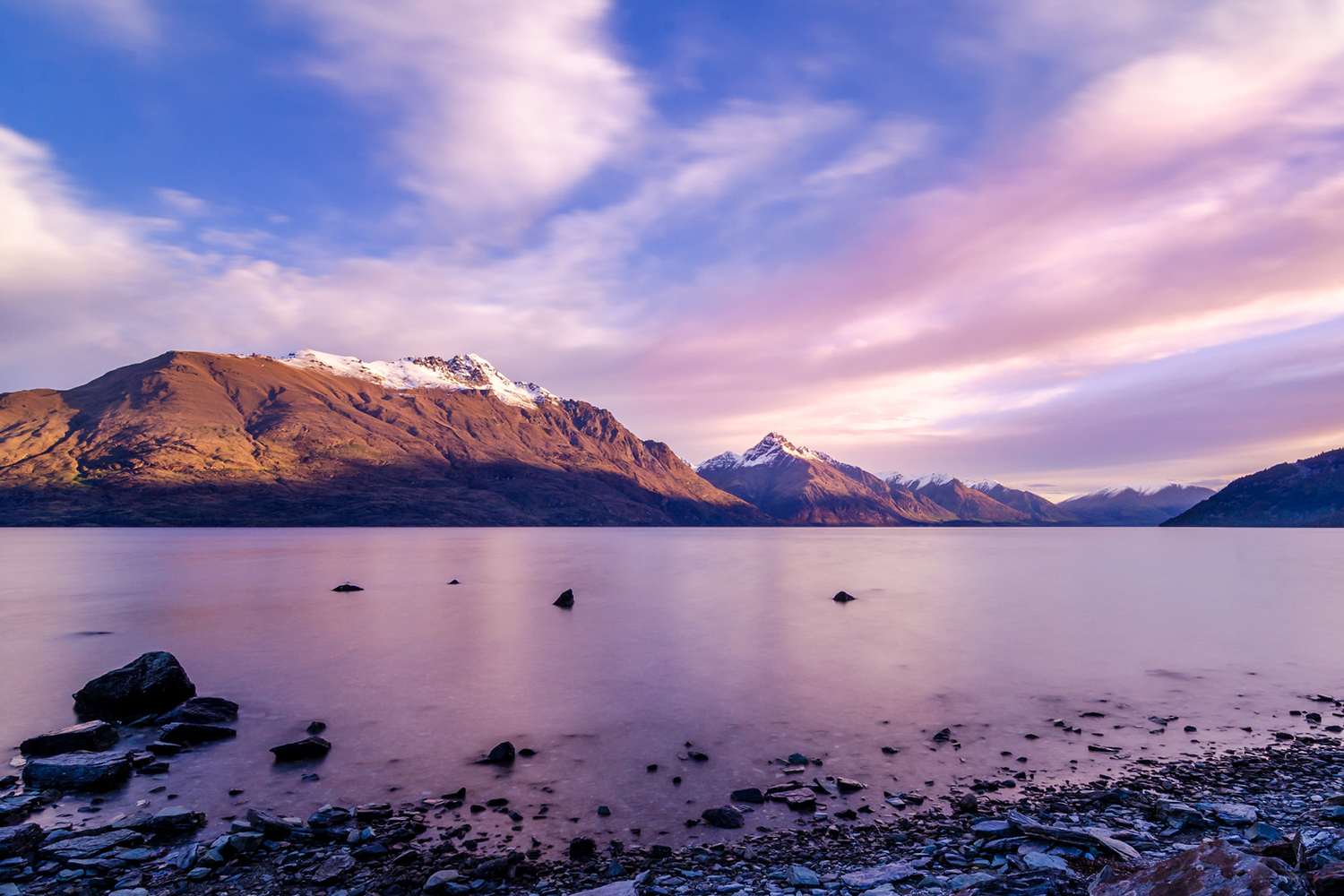
Queenstown sunset (Photo: Mantas Volungevicius via Flickr / CC BY 2.0)
For anybody who has yet to visit, New Zealand finds its way onto the travel wish lists of most people, and it remains a firm favourite with those who have had the chance to go. In fact, it is a country that practically demands repeat visits, thanks to the nationwide natural beauty and sheer number of delightful, quirky settlements, spread liberally across the two main islands.
Therefore, we decided to ask more than 100 writers, travel bloggers, photographers and other in-the-know professionals to pick the five best towns and small cities they consider to be the most charming. To be eligible for inclusion, a city had to have a population of fewer than 100,000 people. After totting up all the survey votes, we present to you, in alphabetical order, the 20 most charming towns and small cities in New Zealand.
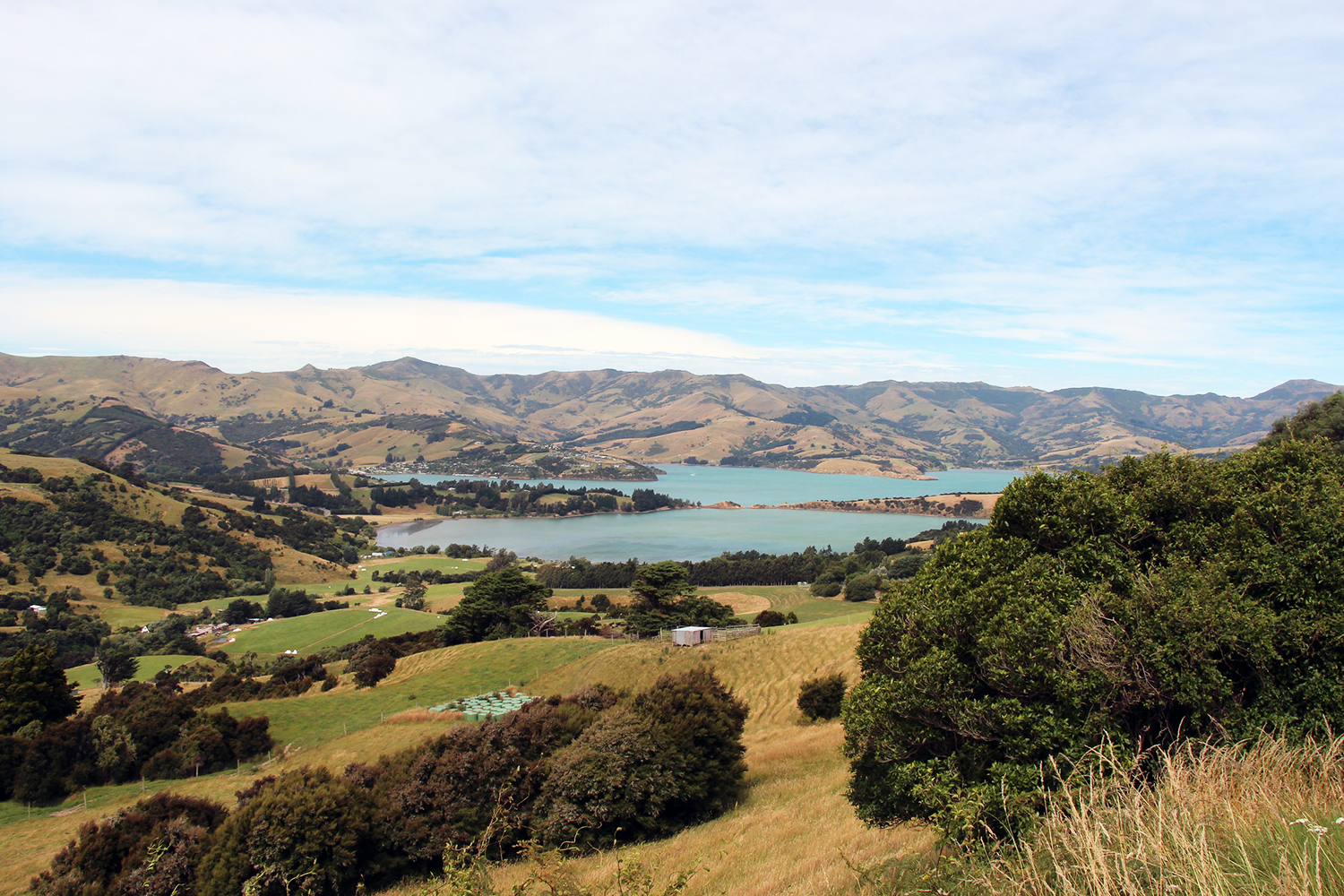
Views over Akaroa (Photo: karlnorling via Flickr / CC BY 2.0)
Akaroa
Just to the east of Christchurch, the wavy lava fields of an ancient volcano form Banks Peninsula. At its centre, on a sheltered bay that eventually leads out into the Pacific Ocean, is the charming resort town of Akaroa. The region long had a Maori presence before British, French and German colonials settled and formed farming communities from the mid-19th century. This bucolic atmosphere never really left the town, with rolling green hills tumbling gently down towards the water’s edge, where the pretty wooden homes with multicoloured roofs dot the shoreline. Many cottages retain a distinctly southern French architectural flavour and many streets have French names, like Rue Jolie. Boat tours to see Hector’s dolphins and little penguins are popular excursions.
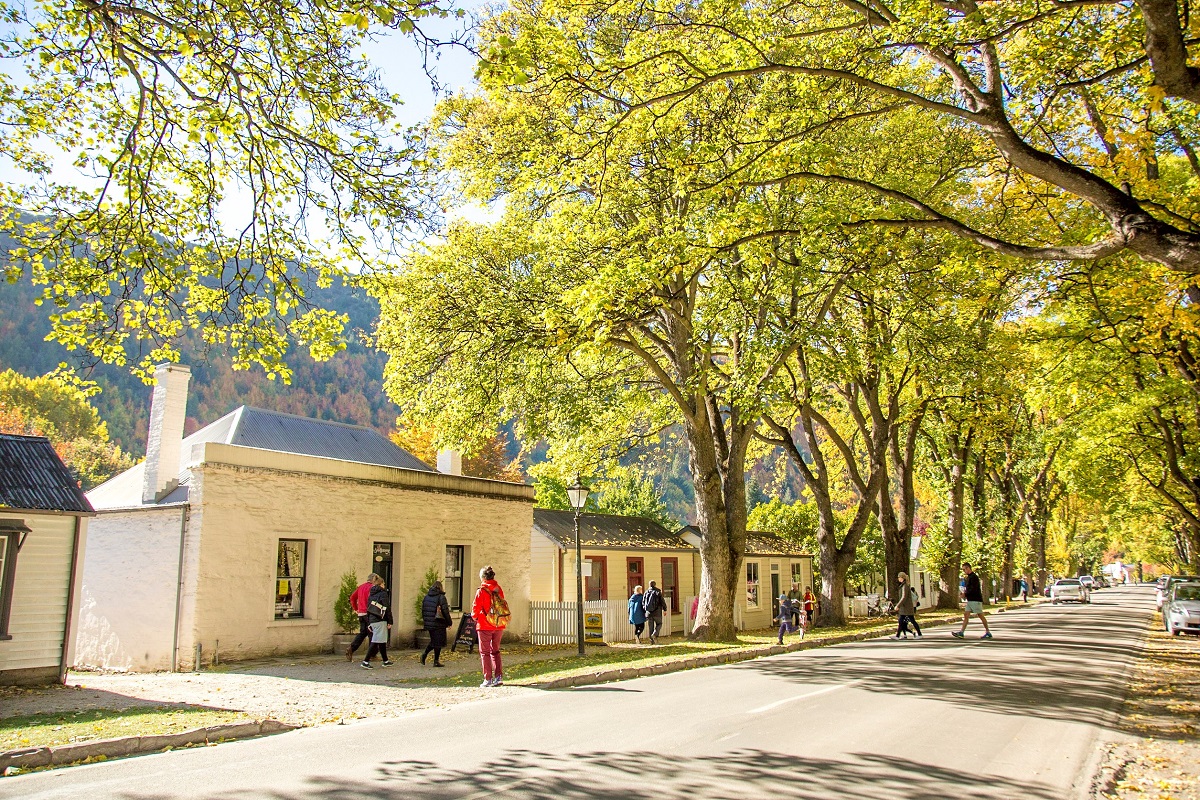
Pleasant streets of Arrowtown (Photo: courtesy of Arrowtown Tourism Board)
Arrowtown
Mist frequently clings to the mountains that overlook the former gold mining settlement of Arrowtown of a morning. But as soon as the sun is up, warming the shopfront verandas along Buckingham Street, it could almost be mistaken for a town in the American Wild West, and the name Arrowtown certainly helps fuel that inclination. The town’s mining past can be examined through exhibits at the Lakes District Museum, while the remains of a tumbledown settlement once populated by Chinese immigrant workers offers a keen insight into what life would have been like for the miners during the gold rush. Hiking trails make the most of the nearby mountains while snowy slopes open during the winter to skiers over on Coronet Peak, 11 miles (17km) to the west.
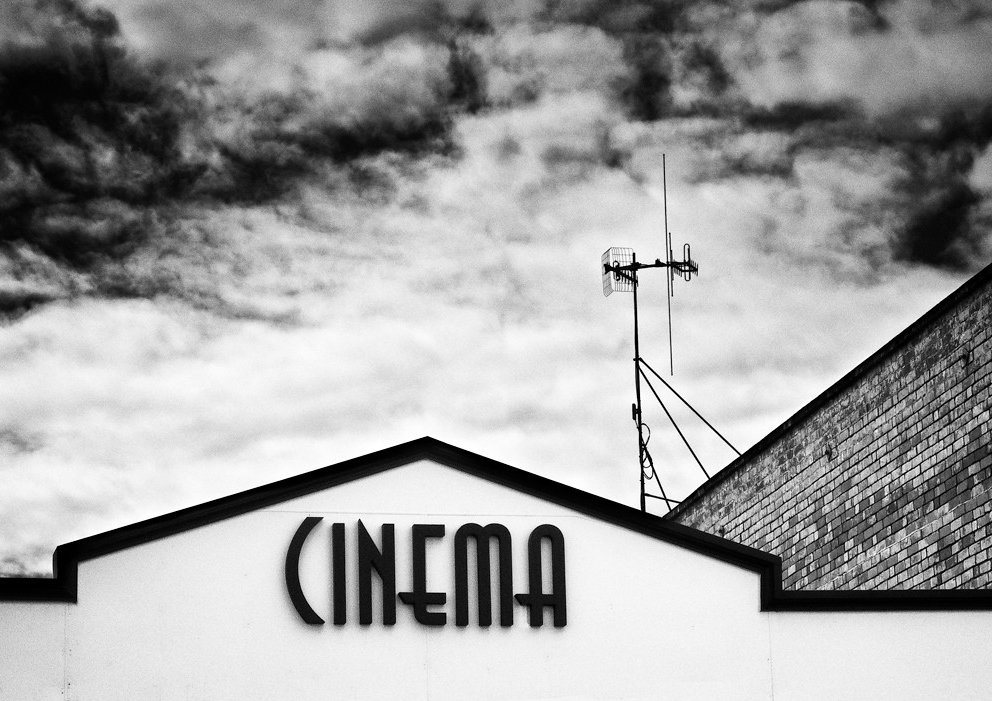
Feilding’s retro style (Photo: Scott.Symonds via Flickr / CC BY-SA 2.0)
Feilding
Feilding’s rural charm has certainly not been overlooked by the Kiwis themselves. In fact, the country’s annual Beautiful Awards have declared it New Zealand’s Most Beautiful Town 16 times. Although managing to retain an air of Edwardian charm from the early days soon after its initial settlement late in the 19th century, the town is quite unassuming and there are no major attractions besides the town itself. Fans of transport history are perhaps best served here, with the Coach House Museum’s large collection of historic vehicles and pre-combustion engine, horse-drawn carriages. Manfeild: Circuit Chris Amon is a major motor sport circuit hosting various events.
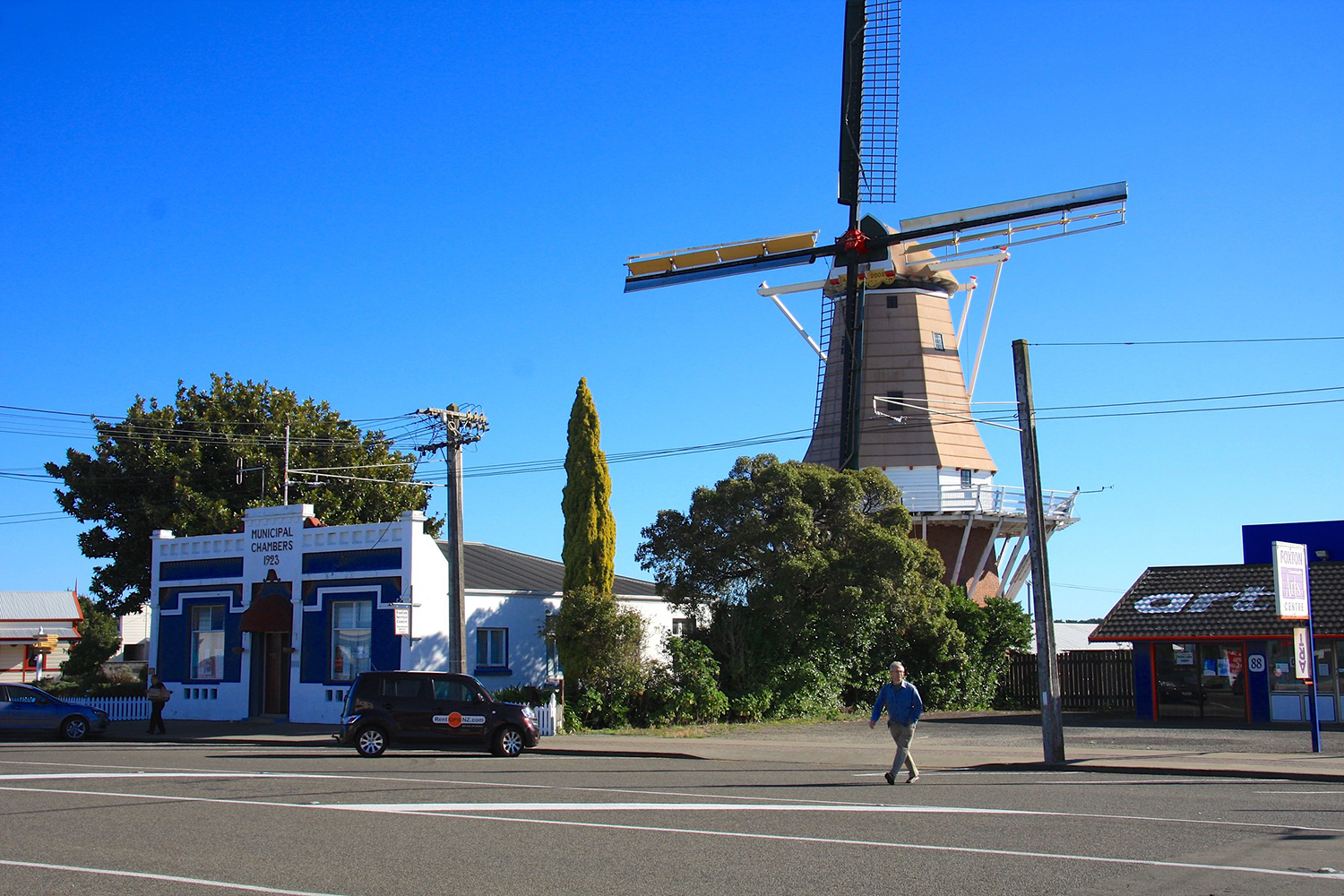
de Molen Windmill in Foxton (Photo: itravelNZ via Flickr / CC BY 2.0)
Foxton
If you’re visiting Foxton from overseas, chances are that many of your fellow visitors will also have flown there. The only difference being that they’re of the winged variety. The Manawatu River’s estuary and wetland welcomes large flocks of migratory birds, like the royal spoonbill, every year. The river also gave Foxton an important role in the flax industry, allowing ships to whisk tonnes of the handy fibre, grown locally to countries like the Philippines to make textiles. Today the industry has gone but the de Molen Windmill and Foxton Beach, where you can ride horses or surf, are popular tourist draws. And while you’re there, you might want to try a bottle the local soft drink, Foxton Fizz, one of New Zealand’s few remaining independent soda producers, which has been around for over a century.
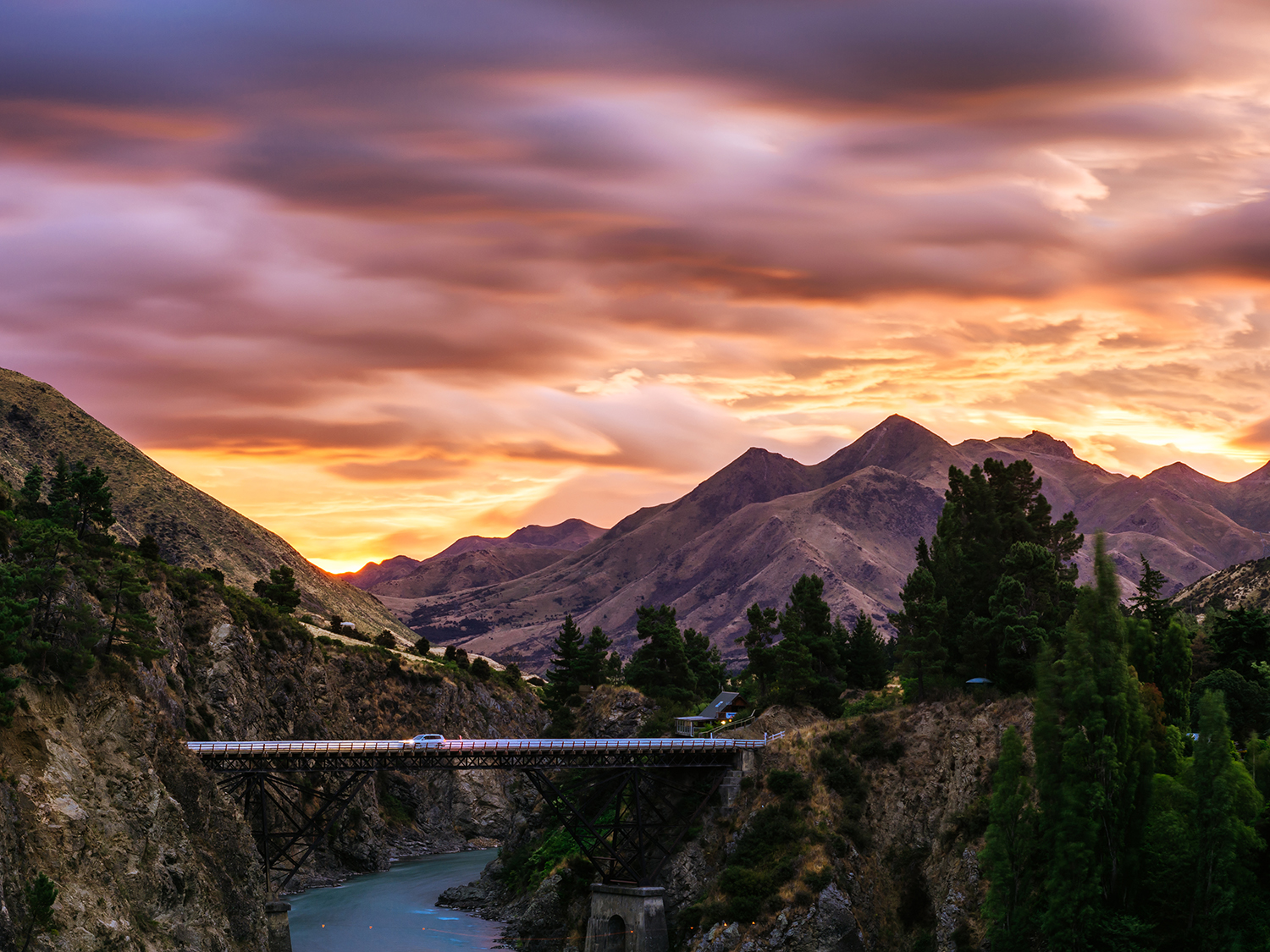
Hanmer Springs Ferry bridge at sunset (Photo: courtesy of Hanmer Springs tourism board)
Hanmer Springs
A few hours’ drive north into the mountains from Christchurch, the South Island’s geothermal properties can keenly be felt at Hanmer Springs. As the name itself suggests, heated mineral water bubbles forth from the springs all around the small town. The large Thermal Pools & Spa resort is the main year-round draw, proving equally popular for its water park vibe in summer and relaxing, warming properties in winter, especially with those who have come down from the nearby ski slopes. Around the town, rocky Waiau Gorge encourages sports of a more adrenaline-fuelled variety, including white-water rafting, bungee jumping and jetboat rides.
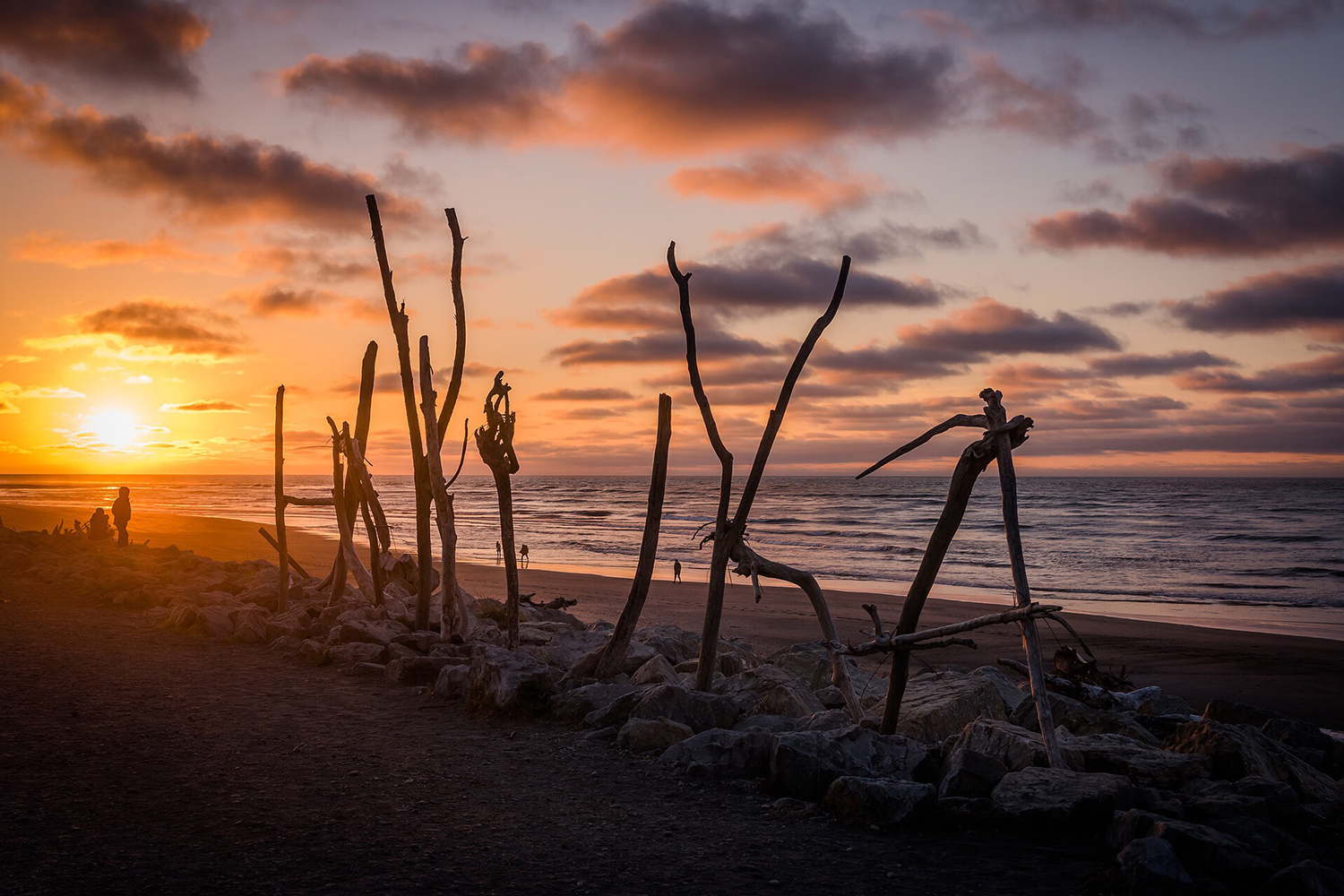
Hokitika Beach (Photo: Jacqueline Ermens via Flickr / Public Domain)
Hokitika
For those driving down the west coast of South Island, or cycling the Wilderness Trail, Hokitika is one of the favourite places to stop for a day or two thanks to its pleasant, beachfront ambience and natural beauty. Witness nature at its most beautiful at Glow Worm Dell as the tiny insects use bioluminescence to light up the trees. You can see native species like the unique tuatara reptiles and young kiwi birds in the National Kiwi Centre, where the latter are raised before being released into the wild. Hokitika is also a great place to go shopping for jewellery made from pounamu, a hard, green stone found locally.
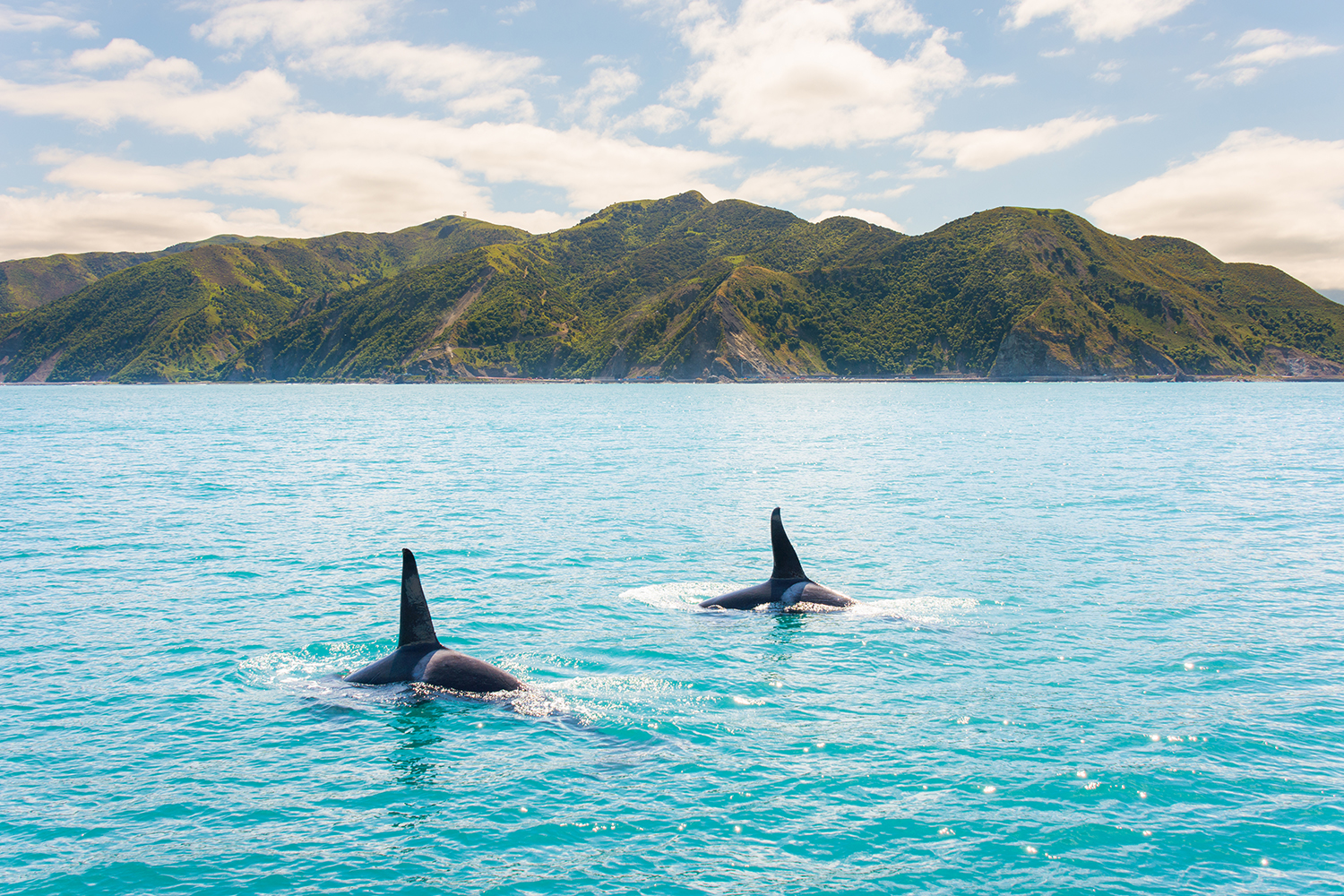
Kaikoura Orca (Photo: Bare Kiwi courtesy of Kaikoura tourism board)
Kaikoura
Once a major whaling port, bones of the gentle mammals can readily be seen still around Kaikoura. Today though, the main source of income in town is from watching, not killing, the sperm whales that gather off the coast year-round, along with resident dusky dolphins and seals. At other times of year, orca, humpback and blue whales can all be seen, along with albatross and other remarkable wildlife. The occasional grassy lookout point around town affords unobstructed views across the charming bay, from which it’s possible to see this marine life. To get up close and personal however, boat tours, kayaking and even snorkelling trips are great ways to interact with the creatures in their natural environment.
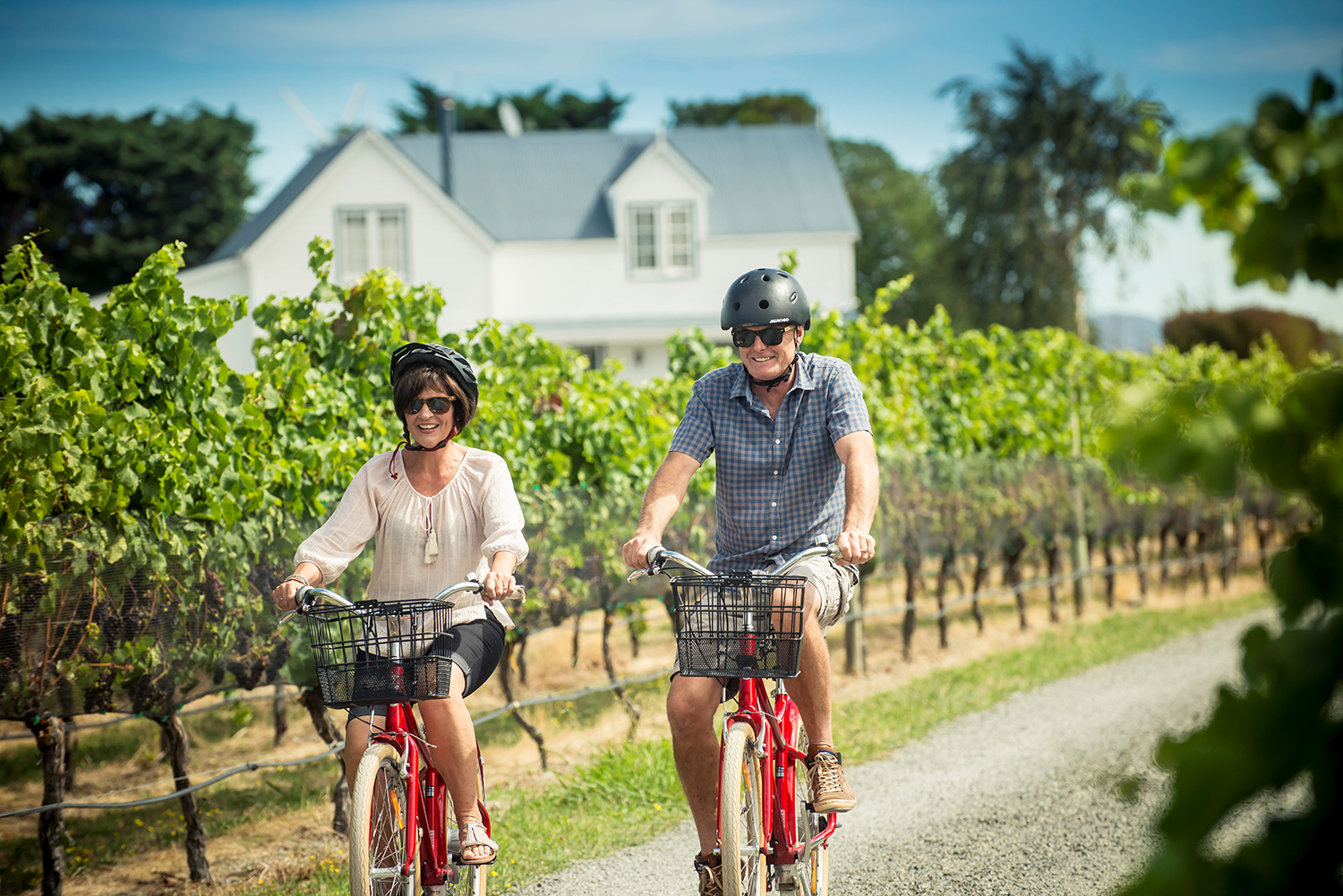
Cycling past the Martinborough vineyards (Photo: courtesy of Martinborough tourism board)
Martinborough
At the heart of the Wairarapa wine region, it’s safe to say that there is one big reason to pay a visit to Martinborough: wine. Most of the local wineries can be accessed in a matter of minutes by bicycle, or slightly longer on foot from the leafy colonial square in the town centre. Fans of the film Sideways will be especially pleased to learn that pinot noir is the speciality of Wairarapa, so you’ll have no problem finding a good tipple over which to wax lyrical about wine in general. Wherever there’s fine wine, exquisite cuisine is usually nearby. Some of the wineries have restaurants on the estate, with highlights like Tirohana offering fine dining, while Colombo Martinborough offers pizzas and platters.
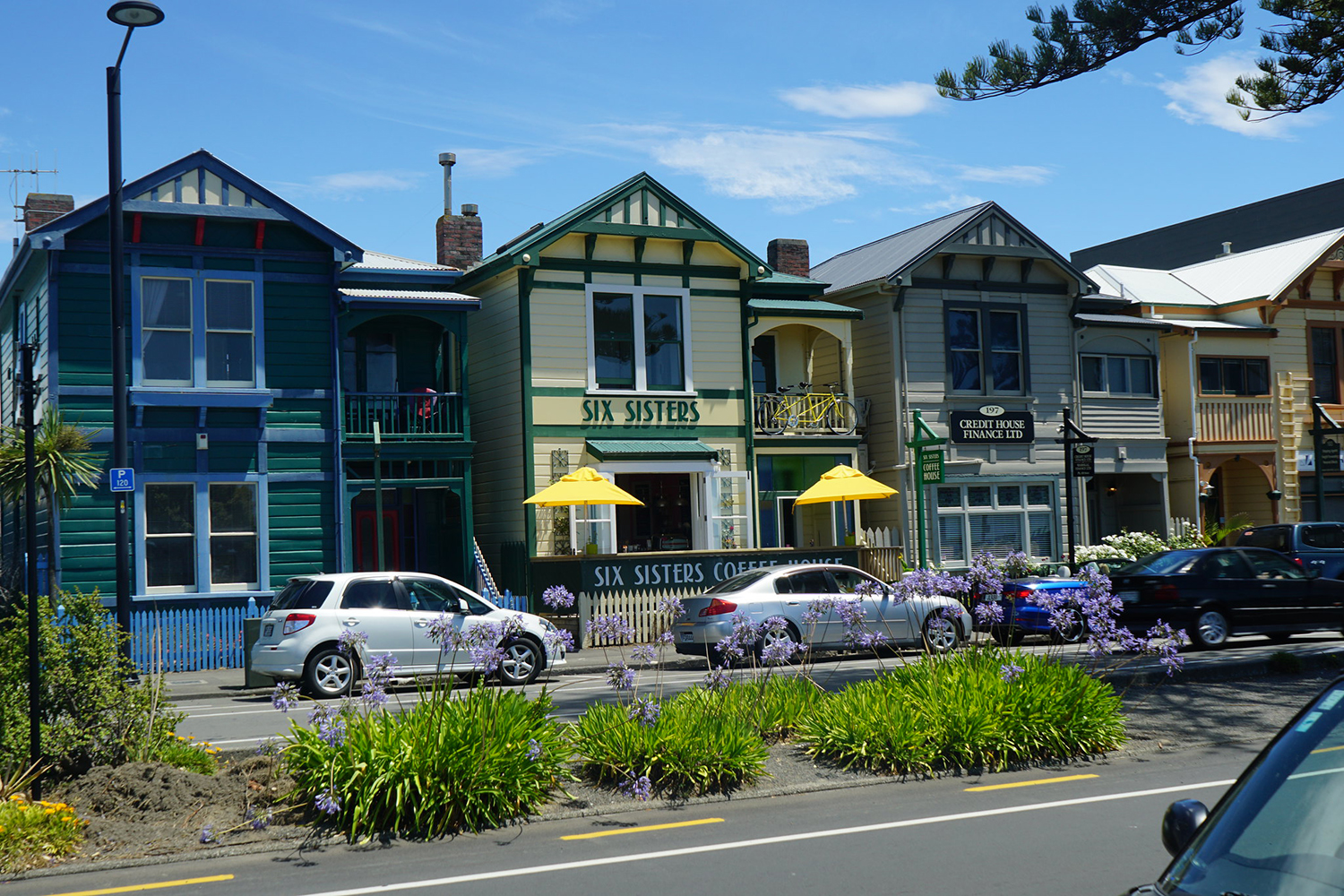
Napier’s historic centre (Photo: thinkrorbot via Flickr / Public Domain)
Napier
At the southern end of broad, sweeping Hawke’s Bay is the pleasant seaside town of Napier. Following a devastating 1931 earthquake, the Napier that rose up from the rubble was dominated by the most popular architectural style of the day: Art Deco. Today Napier is considered to have one of the prettiest collections of Art Deco buildings on the whole continent. Some of the finest of them line Marine Parade, which runs parallel to the small city’s pebble beach and seafront. But the architecture isn’t the only vintage in town. Mission Estate Winery on the western edge of town was the first one to be established in New Zealand. Today it is one of a dozen wineries in the locale, all open to visitors.
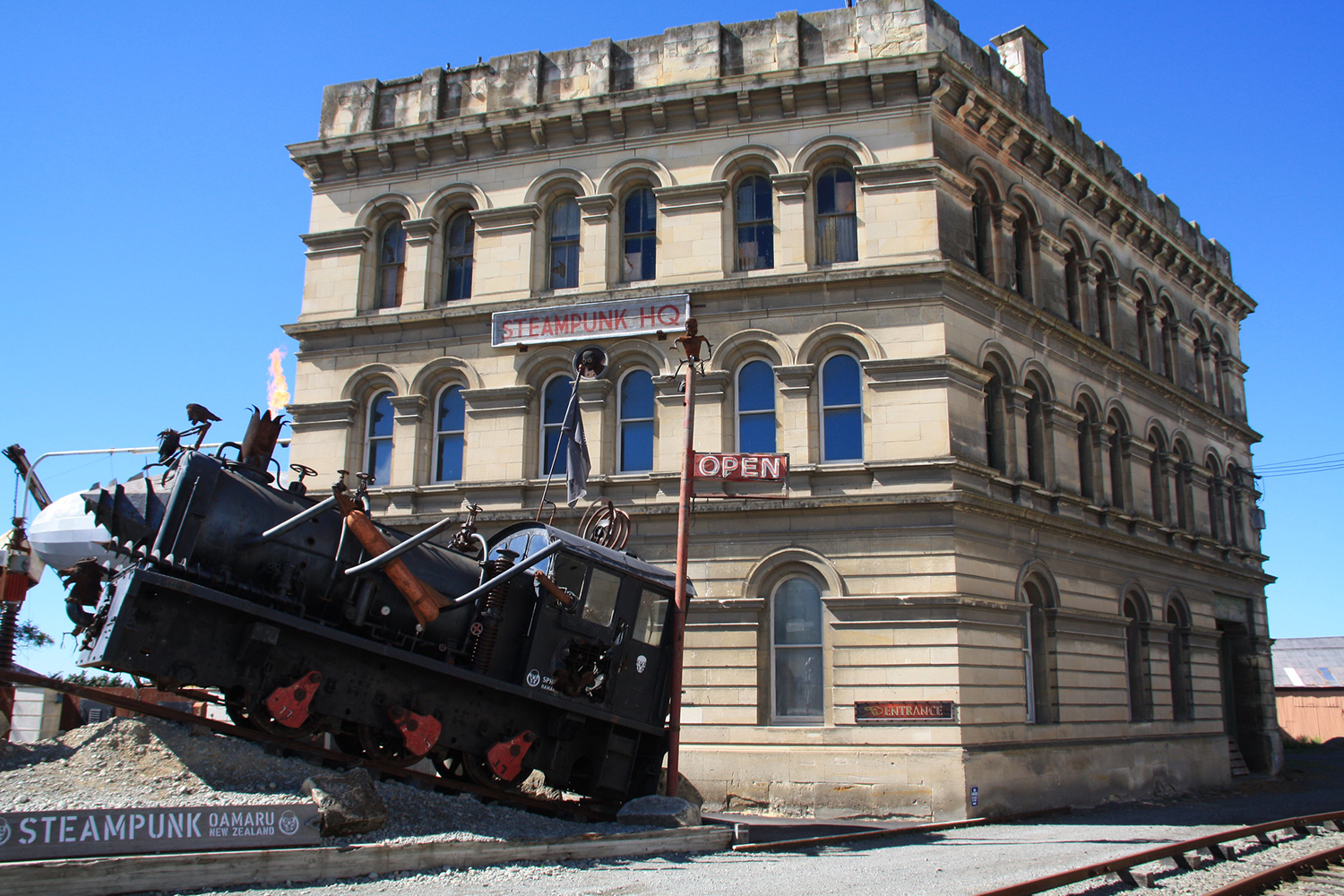
Steampunk HQ in Oamaru (Photo: Christine Wagner via Flickr / CC BY 2.0)
Oamaru
Despite only being a small town, Oamaru is packed with attractions, from the Victorian-style old town area to its seafront natural spectacles. The latter comes in the form of the lovely little blue penguins, which are the smallest penguin species. They tend to return to the beach from hunting at dusk, but must be given plenty of space. At Oamaru’s official penguin observation area there is a seating area, like that at a cricket ground, from which sea lions can also be seen. In town, the Victorian Heritage Centre’s open-air museum feel is created by the quiet roads and well-preserved old buildings. Harbour Street is lined with galleries and quaint shops, while the Victorian quirkiness is enhanced greatly by Steampunk HQ, with its futuristic art installations and interactive exhibits.
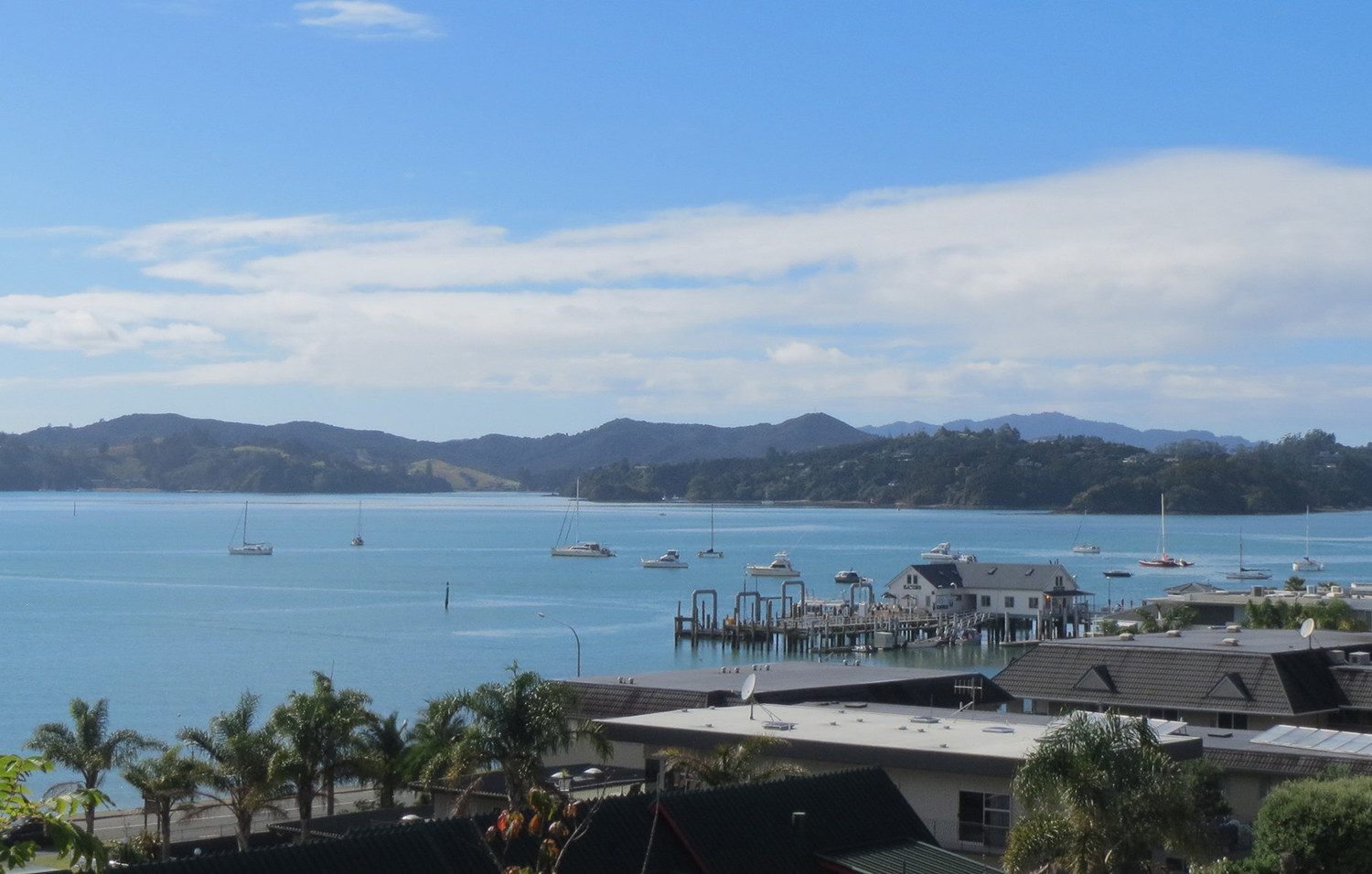
Paihia waterfront (Photo: Sheila Thomson via Flickr / CC BY 2.0)
Paihia
Far to the north of New Zealand, North Island’s coastline fragments into the Bay of Islands, where water sports, fishing and sailing are particularly popular. Cruises around the bay, kayaking and even the quick ferry trip across to Russell are ideal introductions. Delve into the wild expanses around town, like the short Haruru Falls walk or the Opua Forest Lookout for impressive natural vistas. Paihia is also home to one of New Zealand’s most significant sites in the history of Maori-British relations. Known as the Waitangi Treaty Grounds, you can see historical artefacts like a Maori war canoe, Maori cultural performances and items related to the first accord between the two peoples.
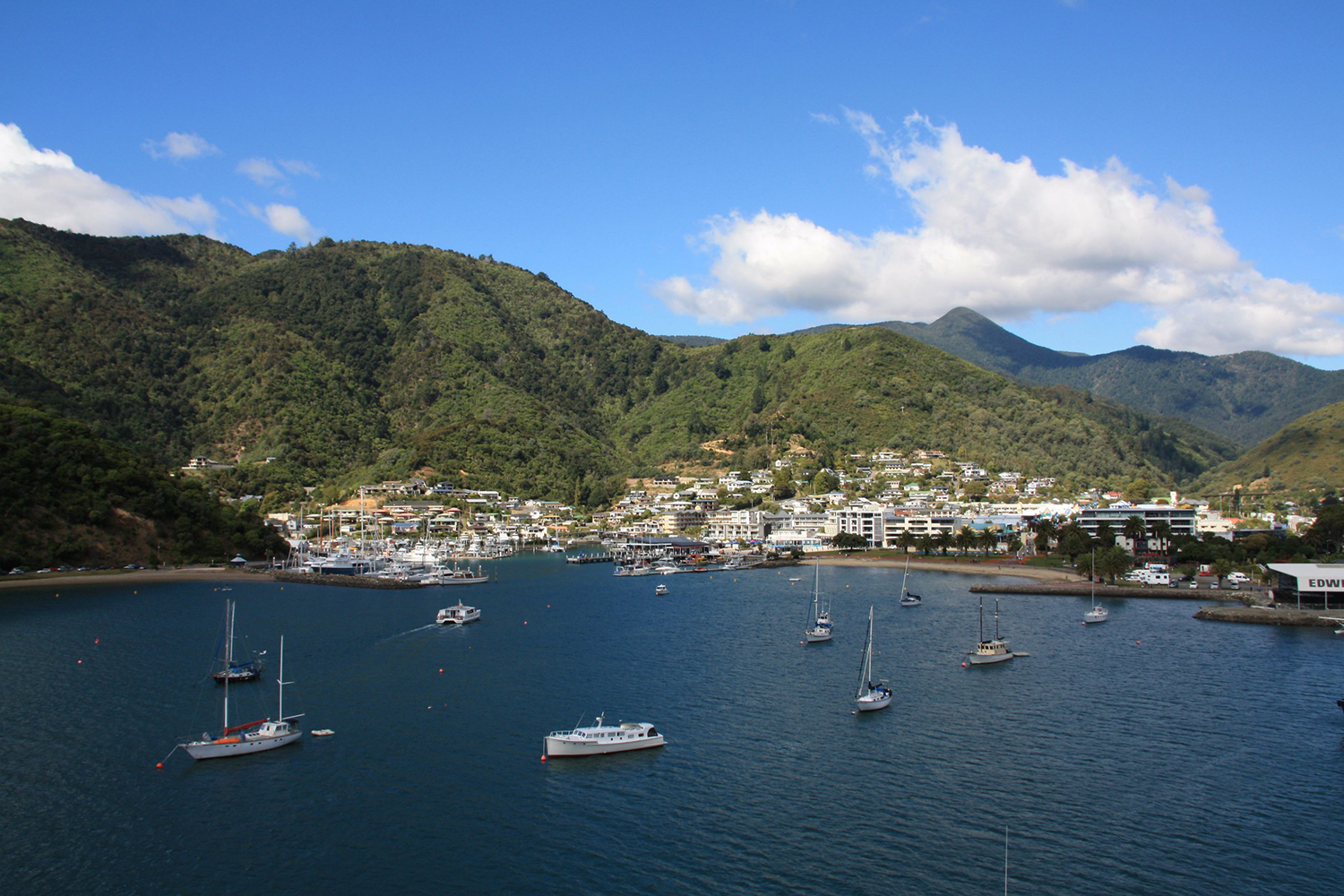
The bay at Picton (Photo: Christine Wagner via Flickr / CC BY 2.0)
Picton
Many people travelling between the to main islands of New Zealand will naturally pass through Picton when they take the ferry across Cook Strait. The small town wraps around one of the myriad bays and coves that dominate this northern shore of South Island. This stunning coastline never sits still and if you’re not viewing it from a boat, try walking either the Tirohanga or Queen Charlotte tracks for expansive views of the undulating Marlborough Sounds landscape. The seafront is dominated by marinas and Picton Memorial Park, where the region’s nautical history can almost be touched, with a surviving 19th-century teak ship on display.
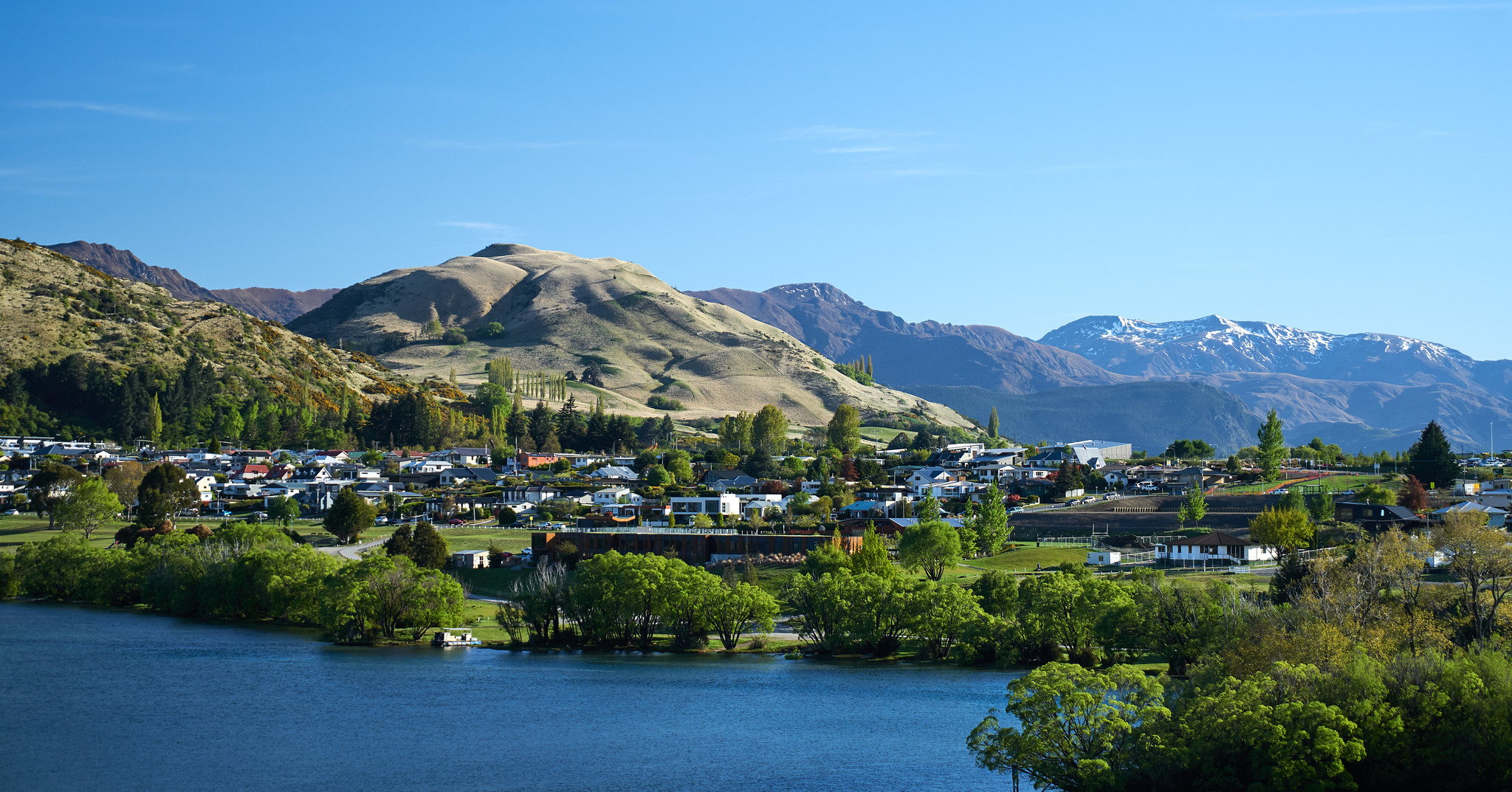
Queenstown in the early morning (Photo: Pedro Szekely via Flickr / CC BY-SA 2.0)
Queenstown
Queenstown is perhaps one of the better-known towns on this list because of its association with the Lord of the Rings films; a franchise whose ancillary benefit was to act as a premium advertisement of the stunning natural beauty of New Zealand. Surrounded by mountain peaks, locales substituted as both Isengard and Anduin River (real names Paradise, Glenorchy and Kawarau Gorge). The Remarkables mountain range encloses Queenstown, which sits on the shore of Lake Wakatipu and the banks of the Kawarau River so that there are mountains and water whichever way you look. Skiing in winter, gondola rides and hiking in summer, kayaking year-round and countless other outdoor pursuits, both passive and adrenaline-coaxing, are readily found.
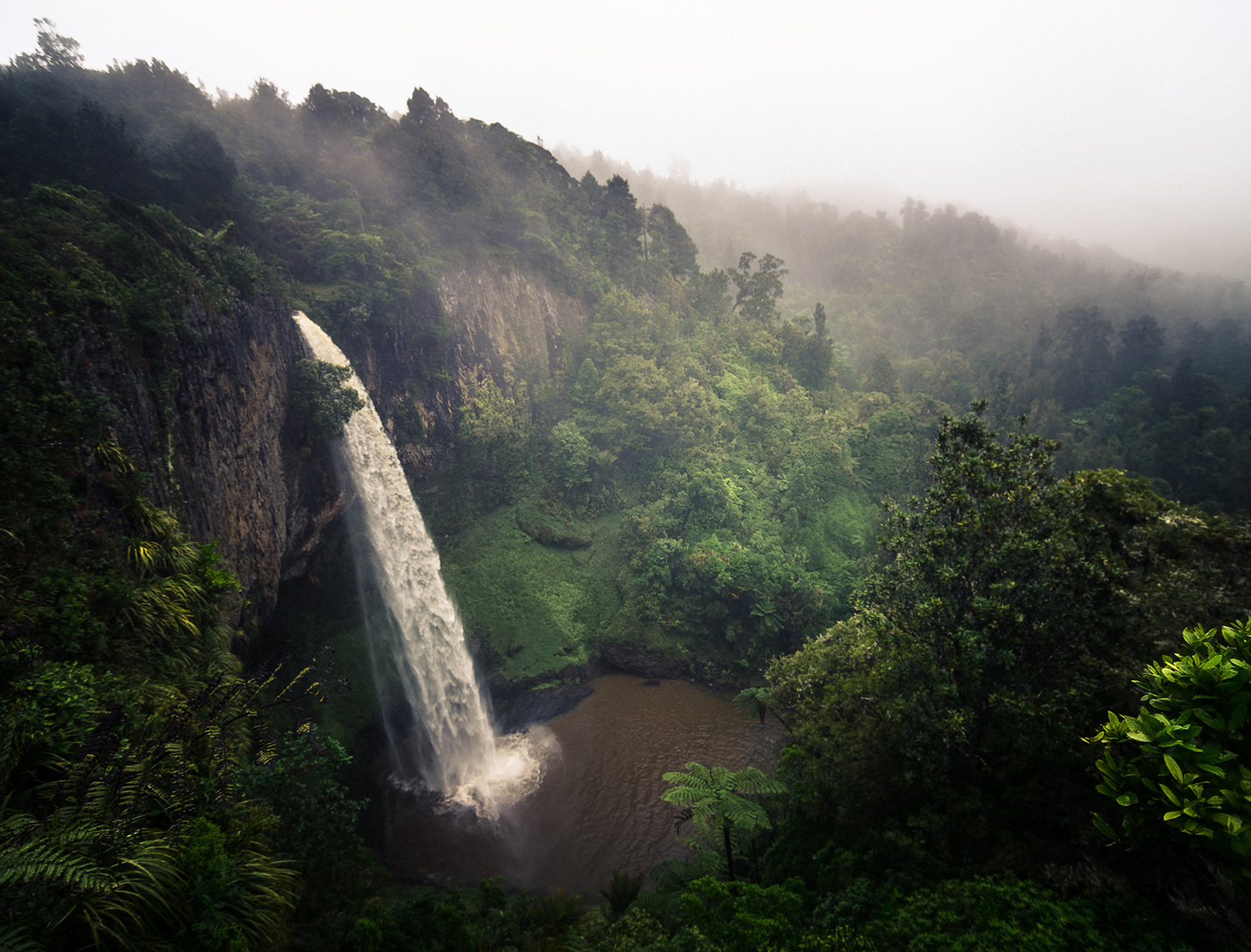
Raglan’s Bridal Veil Falls in the mist (Photo: Tom Hall via Flickr / CC BY 2.0)
Raglan
The main reason people come to Raglan is for the surfing. The stretch of coastline from Whale Bay to Ngarunui Beach, with its black volcanic sand, is well known for its powerful waves, with left hand point breaks of anywhere between 200 and 600 metres. Raglan town itself sits back from shore on the sheltered Whaingaroa Harbour (aka Raglan Harbour). The laidback surf vibe extends to the town, where you can follow the art trail around the centre or catch some live music, with reggae beats being especially common. Away from the sea, there are hiking trails through the hilly countryside to waterfalls like Bridal Veil.
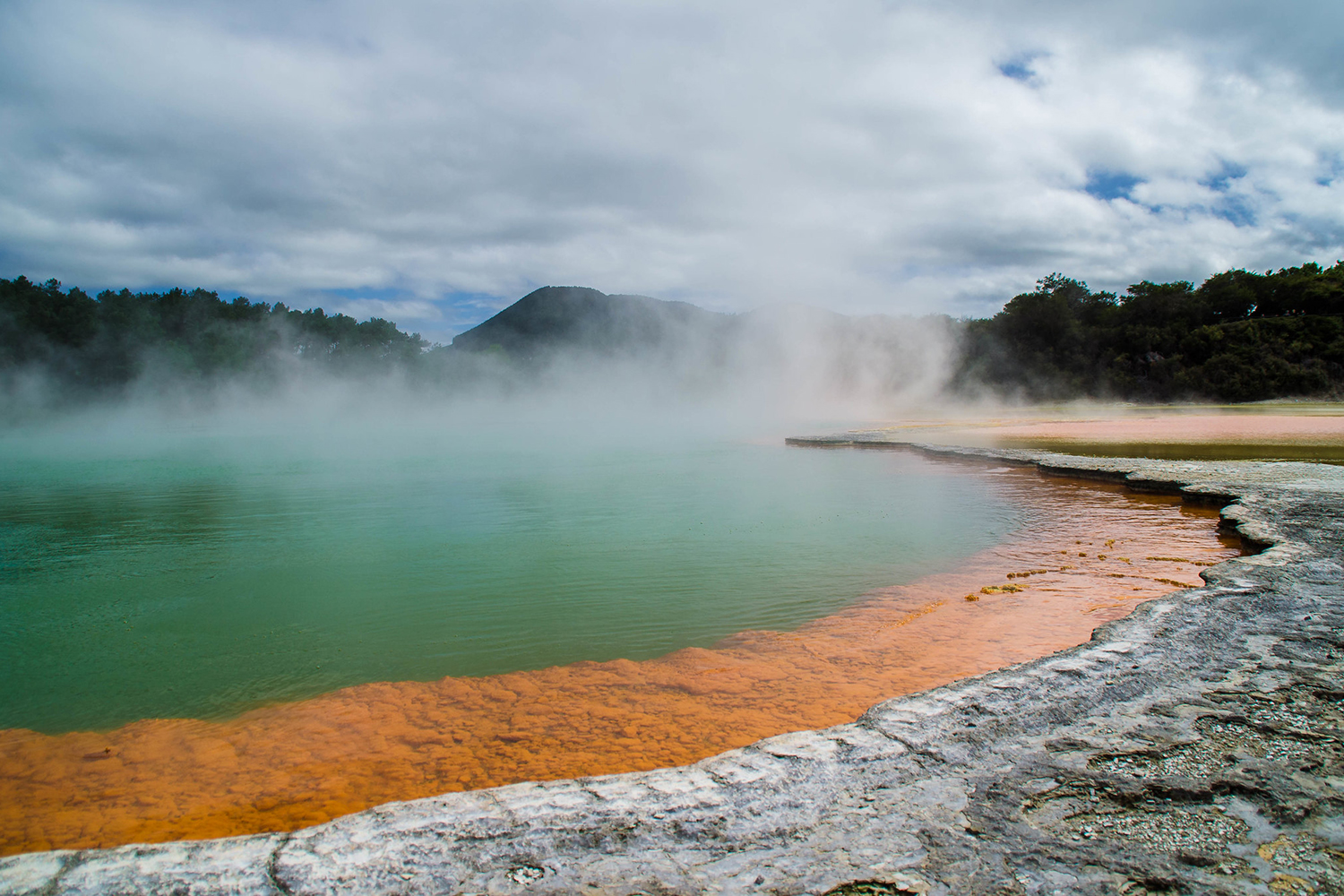
One of Rotorua’s natural wonders (Photo: Tom Hall via Flickr / CC BY 2.0)
Rotorua
Some people are immediately put off Rotorua by the occasional sulphuric smells, but for others, this is a sign they’re on the right track. Needless to say, geothermal activity is common around the town and one of the largest hot springs in the world can be found at Waimangu Volcanic Valley close by, with its brightly coloured crater lakes and silica terraces. Closer to Rotorua, Te Puia has Pohutu Geyser, which erupts as high as 30m regularly. Humans have been drawn to this living land for generations, as is evidenced by Whakarewarewa Maori Village, which predates European settlers by some four centuries. Here you can learn all about Maori culture and heritage in the region.
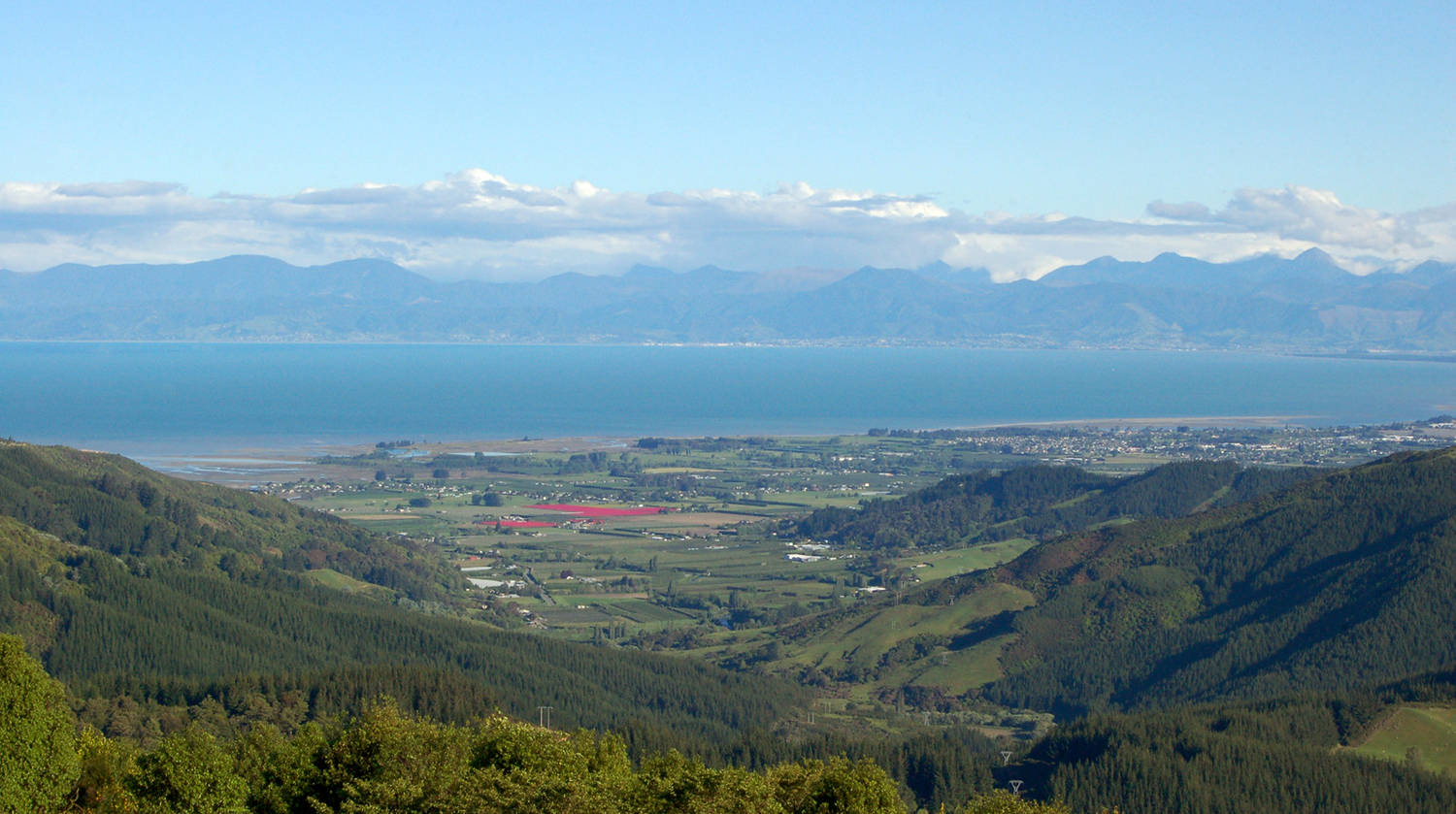
Takaka in the valley (Photo: Torpe via Flickr / CC BY 2.0)
Takaka
Located near the northern tip of South Island, Takaka is surrounded by the spectacular national parks of Abel Tasman and Kahurangi. These broad wildernesses host forest mountains, turquoise seas and sandy, cliffside beaches. The town itself is small and largely dedicated to serving tourists who pass through on their way elsewhere. But the river town enjoys crystal clear freshwater springs at nearby Te Waikoropupu and a small but decent museum dedicated to the exploration and settlement of Golden Bay to the north. One of the most popular Golden Bay excursions is horse riding along the beach to Wharariki Beach.
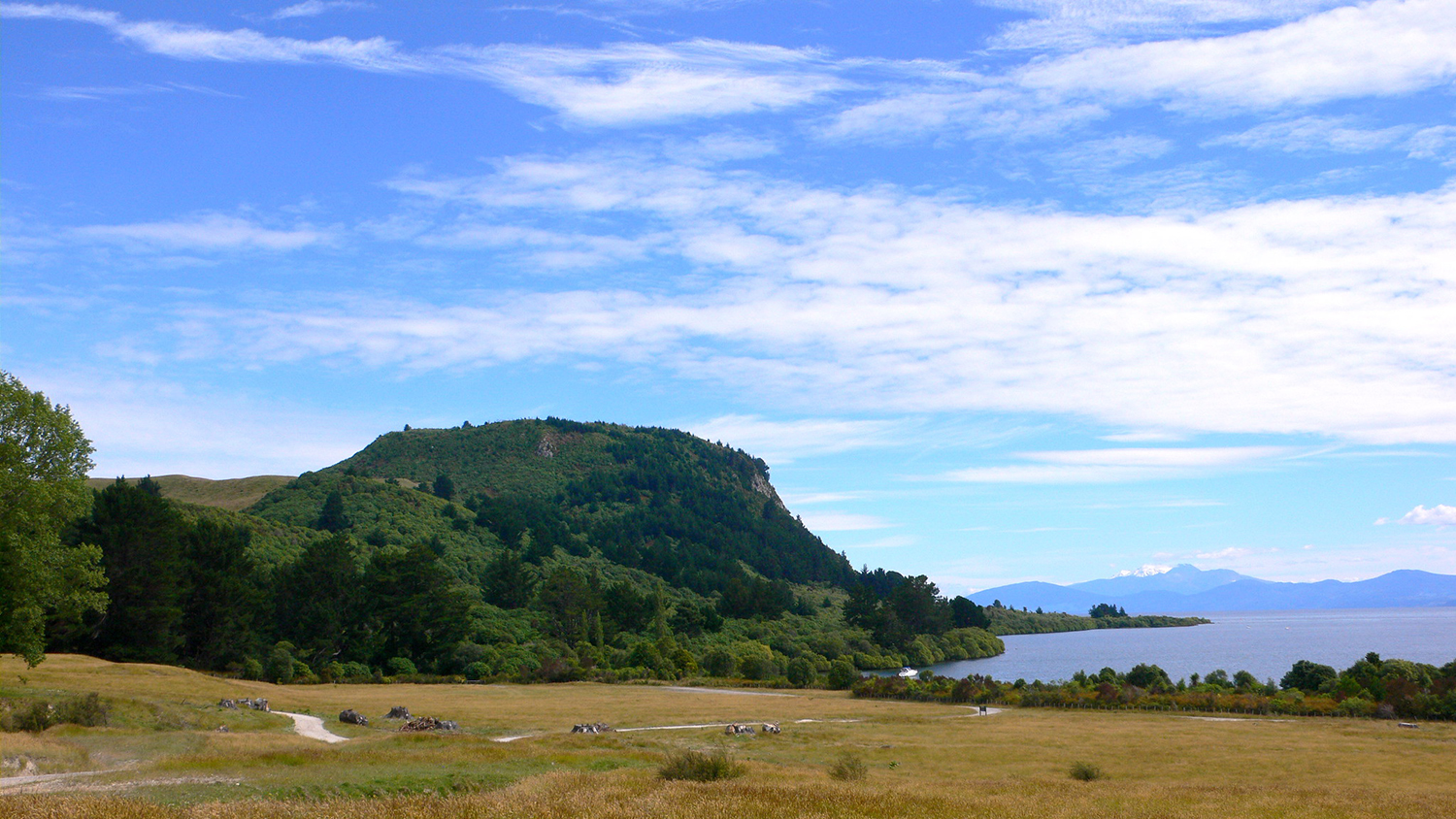
Taupo Lake (Photo: Herry Lawford via Flickr / CC BY 2.0)
Taupo
Taupo is the gateway to its namesake lake, and is a popular spot for those seeking outdoor activities. Taupo Lake, the largest in New Zealand, is best explored on a boat cruise, which will typically visit the impressive Mine Bay rock carvings, etched into a cliff on the shore in 1970. Geothermal activity is common nearby and is best experienced at Craters of the Moon, where a boardwalk traverses a land pockmarked by craters and steam vents. Huka Falls is a powerful churning stream of water, channelled through a narrow gorge. A locally-produced delicacy well worth trying before you leave is the Huka manuka honey.
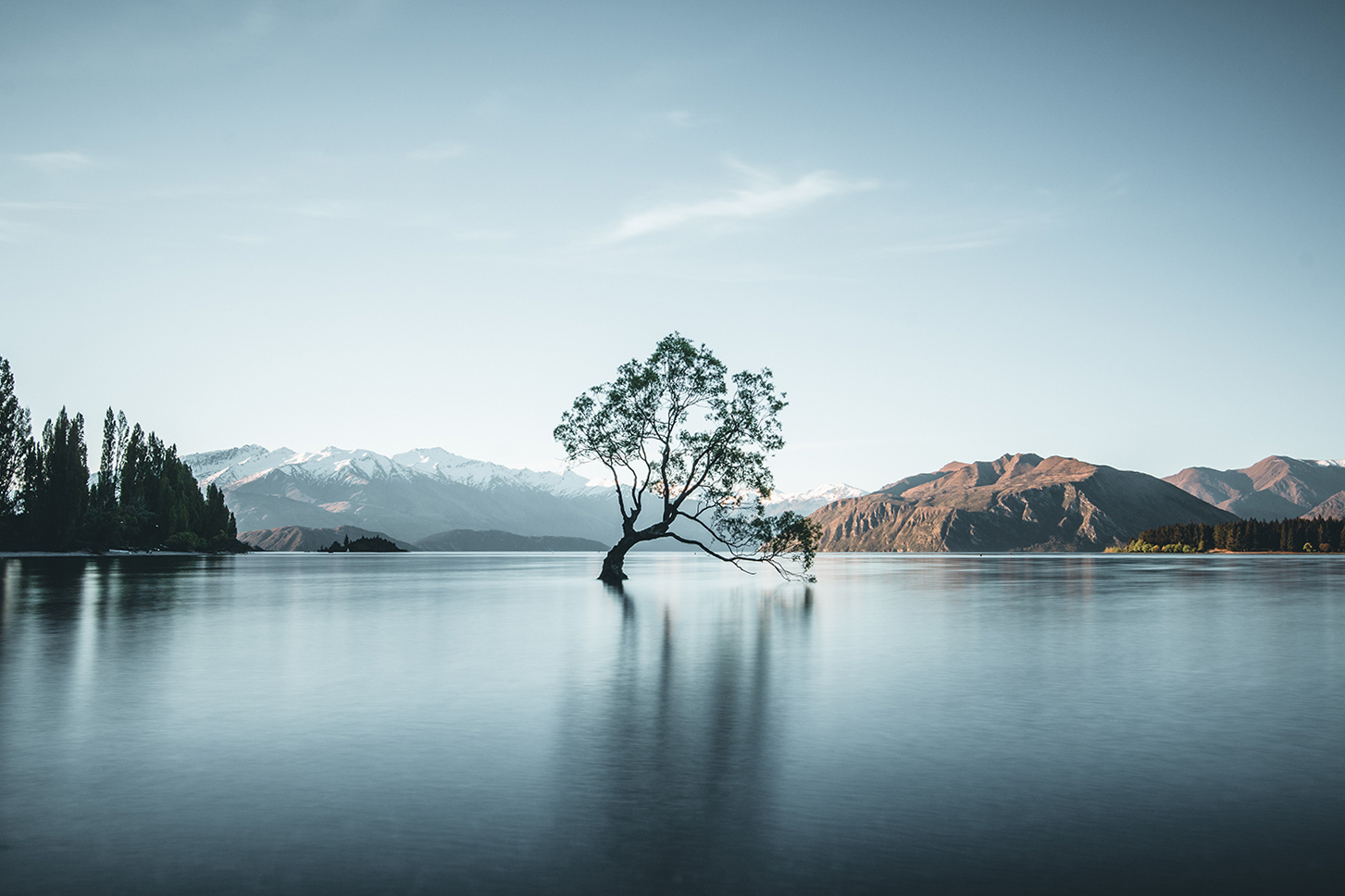
Wanaka’s famous lake tree (Photo: Fernando courtesy of Wanaka tourism board)
Wanaka
With a neighbouring mountain range and a position at one end of Lake Wanaka, the fourth largest lake in New Zealand, Wanaka is an important hub for lovers of the outdoors. In winter, there are four ski resorts, like Treble Cone, nearby. In the summer, it’s much more popular to take to the calm water in a canoe or on a lake cruise. And in the social media age, the tree in the lake, gently leaning to one side, has achieved Instagram fame. But point your camera anywhere and you’ll find captivating mountain backdrops and pretty vistas. The town centre itself has plenty of excellent lakeside restaurants and cafes, most of which remain open throughout the year.
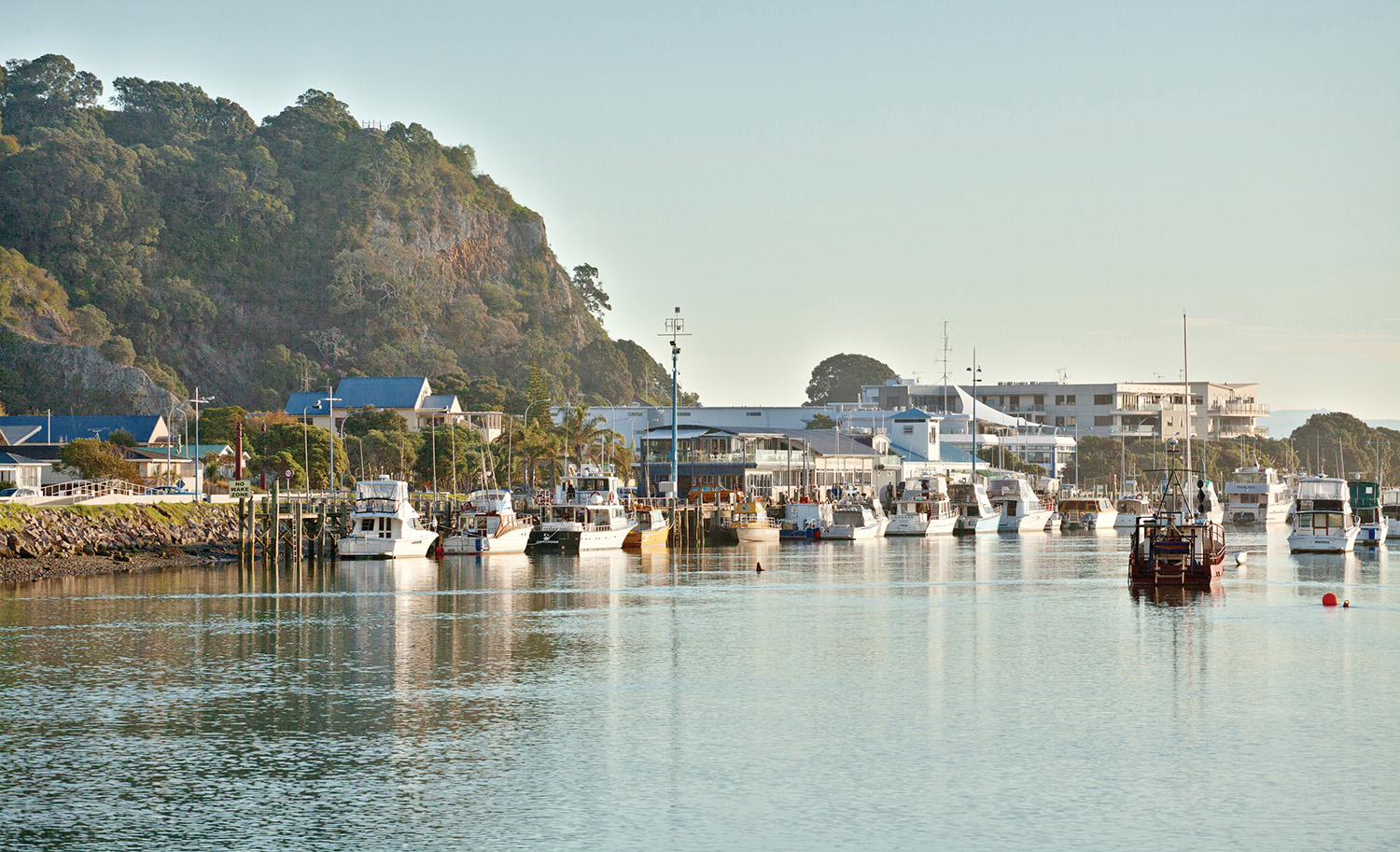
Whakatāne harbour (Photo: courtesy of Whakatāne tourism board)
Whakatane
There’s a special place for Whakatane in Maori history. It is believed that when explorers from Polynesia first arrived in the region, Whakatane was one of the first settlements they established in New Zealand. The town is situated on a narrow estuary outlet to the sea, and overlooked by lofty headlands. The Wairaka, a statue of a chieftainess who helped save a canoe from sinking, stands proudly atop one. Struggles with nature are never far away here, with White Island, 50 miles (80km) away, hosting an active volcano. At the time of writing, the popular trips to White Island had been suspended after a deadly eruption sadly claimed the lives of 20 people. Whakatane however was unaffected and other popular excursions include wildlife spotting on nearby Moutohora Island.
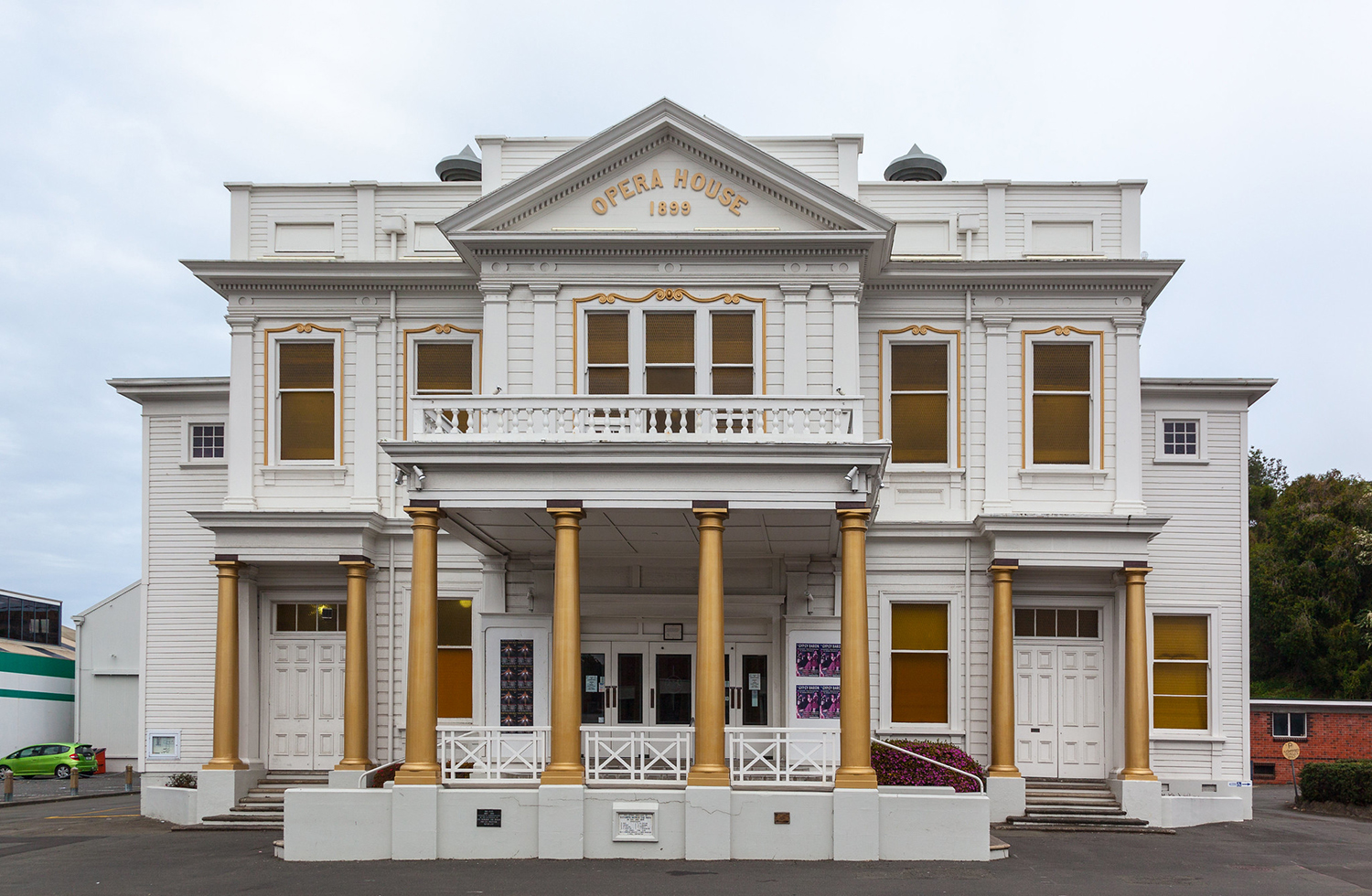
Whanganui Royal Opera House (Photo: russellstreet via Flickr / CC BY-SA 2.0)
Whanganui
Winner of New Zealand’s Most Beautiful City award in 2019, Whanganui can also lay claim to quite a bit of cultural capital as well. Numerous art exhibitions, like those at Sarjeant Gallery, plus a range of creative studios, are open to visitors, along with Whanganui Regional Museum, which explores natural history. The Royal Whanganui Opera House dates back to 1899 and runs a slew of events. Whanganui River, which circumvents the eastern edge of the city, can be explored by paddle steamer, or by following the Mountain to Sea cycleway connecting the nearby Ruapehu mountain to the seafront beaches via the riverbanks.
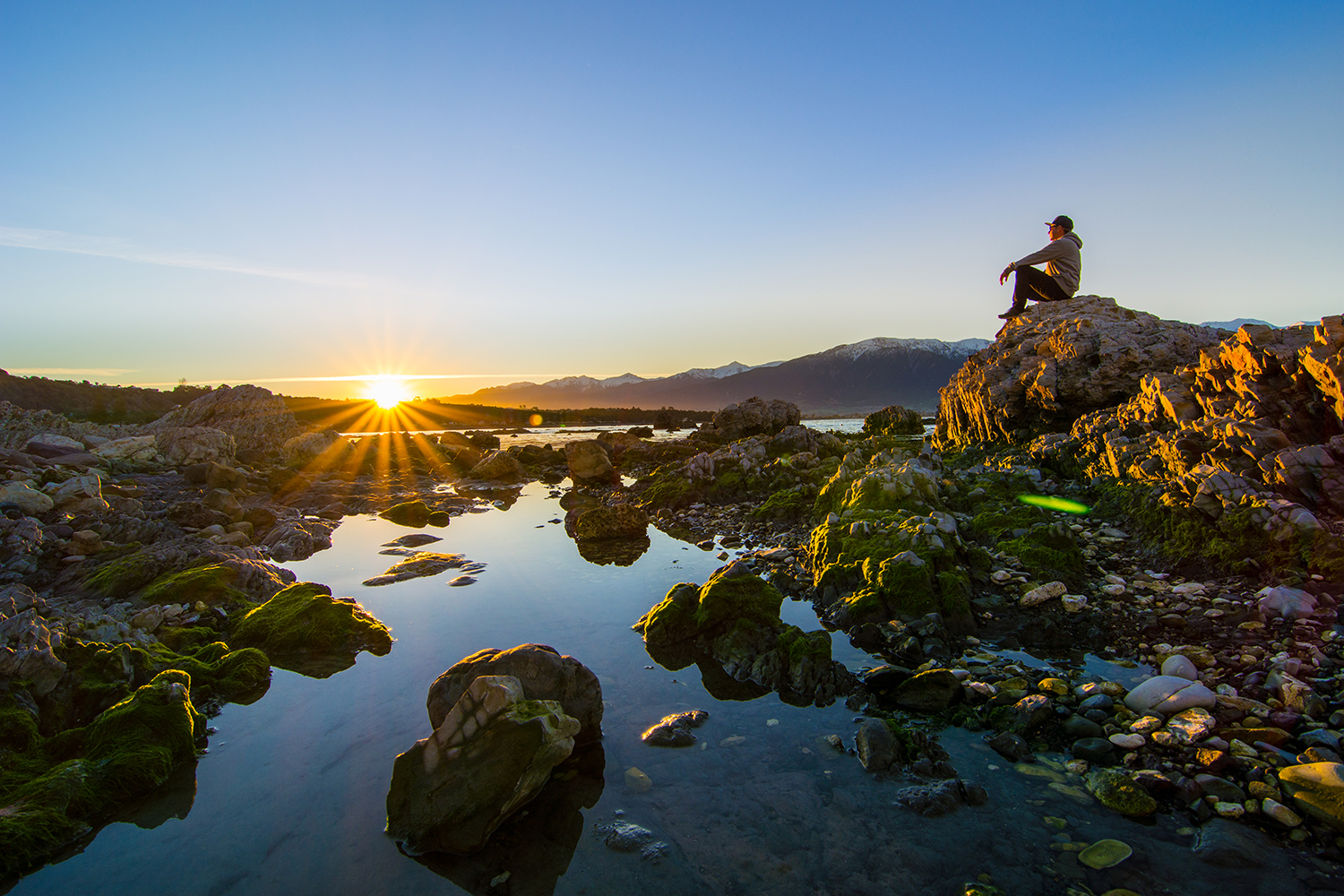
Kaikoura Sunset (Photo: Bare Kiwi courtesy of Kaikoura tourism board)